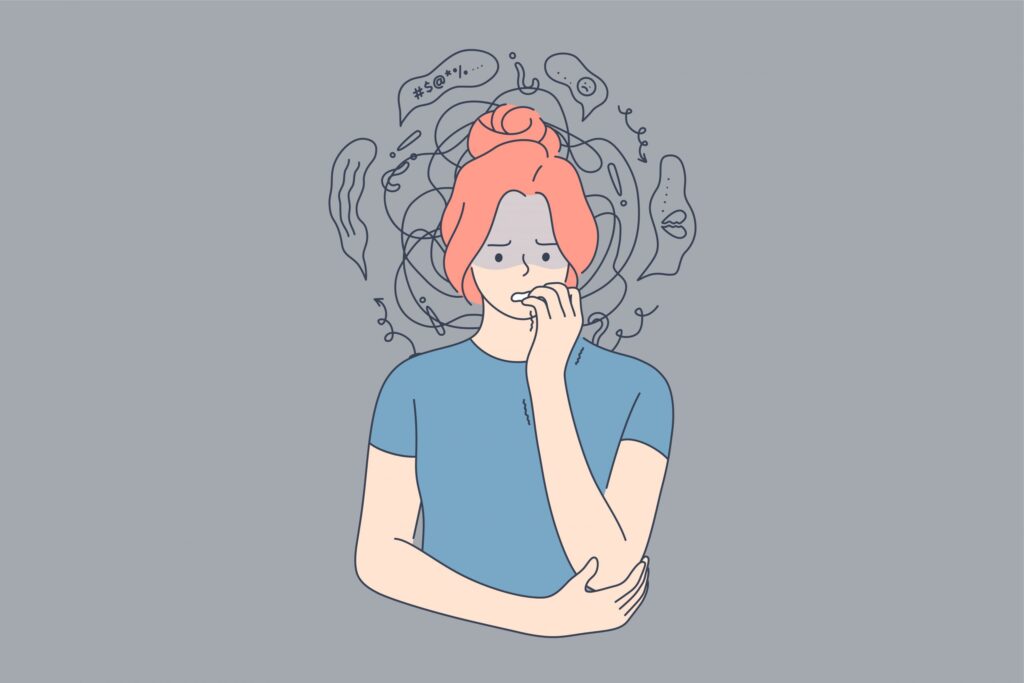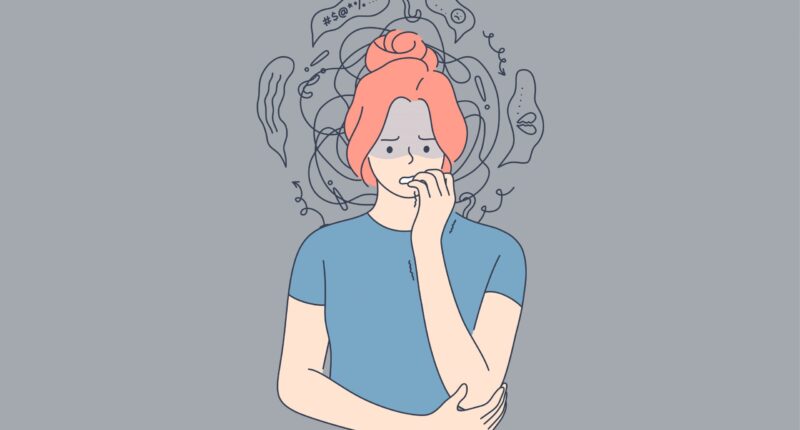
In this article, we explore the different types of anxiety disorders along with management and coping techniques for anxiety.
What is Anxiety?
It’s normal to feel nervous before a specific event, such as a test.
Usually, anxiety is temporary. But someone with an anxiety disorder experiences regular, severe anxiety. Anxiety can be debilitating and prevent them from doing their normal activities.
Anxiety disorders are common. According to the National Institute of Mental Health, about 19.1% of adults in the United States have an anxiety disorder.
Types of Anxiety Disorder
There are many types of anxiety disorders, which we describe here:
Agoraphobia
Agoraphobia is the fear of places where it is difficult to escape or get help if something goes wrong.
People with this type of phobia avoid certain places or situations. For example, they can avoid crowds or public transport. Some people may become housebound in severe cases.
Generalized Anxiety Disorder
Generalized anxiety disorder (GAD) involves constant worrying about everyday things. There may be no clear cause or trigger for anxiety. This chronic condition can cause sleep problems, irritability and muscle tension.
Obsessive-compulsive Disorder
Obsessive-compulsive disorder (OCD) causes disturbing, intrusive thoughts that a person can manage by performing repetitive behaviors that provide temporary relief.
Examples include compulsive hand washing for fear of contamination. If a person does not act on a compulsion, they may feel more anxious as a result.
Phobias
Agoraphobia is a type of phobia or fear. However, there are many other phobias. Some are common and relatively mild, such as the fear of spiders, or arachnophobia. Others can be more disruptive to a person’s life.
Panic Disorder
People with panic disorder are prone to panic attacks. These panic attacks lead to physical symptoms similar to a heart attack.
Post-traumatic Stress Disorder
Post-traumatic stress disorder (PTSD) can develop after a person experiences trauma. For example, someone may develop PTSD after an accident, assault, or natural disaster.
In some people, symptoms are temporary. But others will experience PTSD for a long time.
Selective Mutism
People with this rare disorder avoid speaking despite having the ability to do so. People with selective mutism are usually very shy. They fear social judgment and embarrassment.
Separation Anxiety
Separation anxiety is common in children, but adults also experience it.
People with this type of anxiety disorder have an intense fear of separation from the people who are close to them in their lives.
Social Anxiety Disorder
People with this anxiety disorder have an intense fear of social interactions. They usually fear social humiliation and worry about the judgment of others.
What is an Anxiety Attack?
An anxiety or panic attack involves a sudden burst of intense anxiety that produces physical symptoms. Symptoms may include difficulty breathing, chest pain, and dizziness.
Some people use the terms anxiety attack and panic attack interchangeably. Panic attacks can last anywhere from 5-30 minutes.
Panic attacks are terrifying, and people who experience them are usually afraid of triggering others. Some people go to great lengths to avoid situations that could trigger another episode.
Symptoms of a Panic Attack
Despite their severity, the symptoms of a panic attack are not life-threatening. These include:
- sweating
- shaking
- heart palpitations
- dizziness
- nausea
- panting and shortness of breath
- hot and cold flushes
- increased heart rate
- trembling
- depersonalization
Some people experience these kinds of symptoms with their regular anxiety. What makes a panic attack different is how intense and sudden the physical sensations are.
Causes of Anxiety
The causes of those problems are complex. Some possible causes of anxiety disorders may include:
- Environment: A person’s life experiences, upbringing, and home environment have a significant impact on whether a person develops anxiety. A 2014 study found that certain parenting styles increase the risk of anxiety disorders.
- Genetics: People with a family history of anxiety disorders are more likely to develop the disorder.
- Health Conditions: Certain health problems can cause anxiety symptoms, such as thyroid or heart conditions.
Women are also more likely to develop anxiety disorders than men.
Management
Certain self-care strategies can help a person manage anxiety in their daily life. People with severe anxiety should not use these methods to replace help from a mental health professional.
Support Groups
Support groups can provide a place for people with anxiety to talk about their experiences with others who understand their condition. Additionally, joining spiritual groups that focus on compassion and forgiveness can help some people with anxiety.
Relaxation Techniques
Activities that calm the nervous system can help reduce anxiety, such as:
- Spend time in nature
- Activities that entertain a person
- Meditation and mindfulness
Lifestyle Changes
Substances such as caffeine and certain nutritional deficiencies can make anxiety worse. Additionally, getting enough exercise and eating a nutritious diet can help reduce it.
A person with an anxiety disorder may experience some of the following benefits:
- Reducing caffeine intake
- Exercising regularly
- Focusing on eating whole foods, such as fruits, vegetables and fish
Summary
Anxiety is a normal response to stress and change, but anxiety disorders are extremely disruptive conditions. There are several types of anxiety disorders, including PTSD, OCD, GAD, and phobias.
Treatment for anxiety disorders may include a combination of therapy and medication. People should seek help for a problem that regularly affects their normal life.









